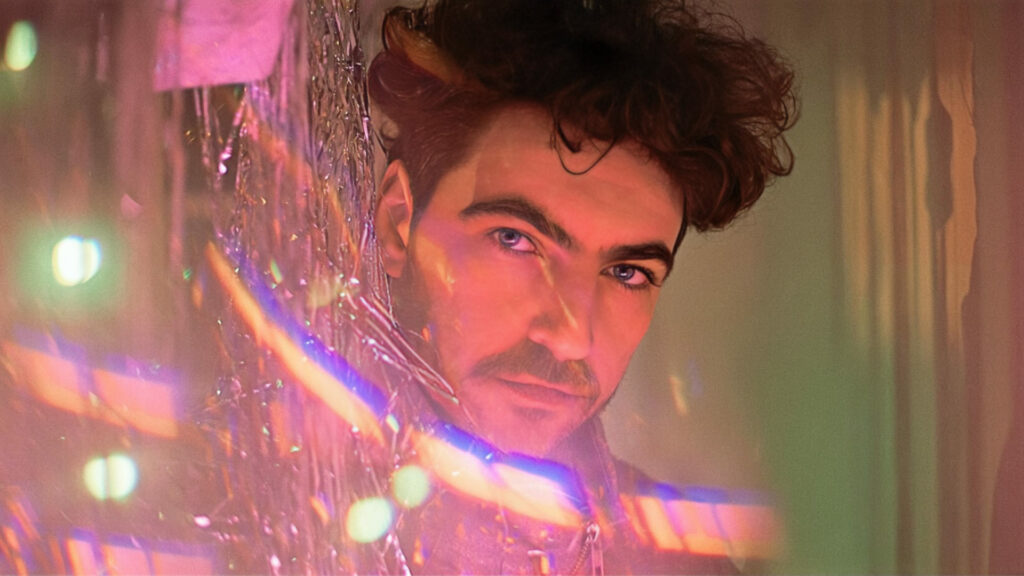From the early innovations of Kraftwerk and Brian Eno to the rise of techno, drum and bass and Autechre’s experimental forms of IDM, it has continuously absorbed technological advancements, reshaping itself with each new tool and trend. Today, standing on the edge of the fourth industrial revolution, the future of electronic music feels more expansive and unpredictable than ever.
In his book Futuromania, Simon Reynolds frames electronic music as more than a genre—it’s a reflection of society’s relationship with technology, constantly evolving in response to our changing world. “Electronic music has always been a forward projection of where we think we’re going,” Reynolds writes. In a world where artificial intelligence, virtual reality, and global connectivity are advancing at breakneck speed, electronic music’s future feels boundless yet uncertain.
One of the defining features of the next era in electronic music may be its ability to blur boundaries, both creatively and geographically. While the genre has already absorbed influences from hip-hop, jazz, world music, and classical compositions, the coming years promise even more stylistic cross-pollination. At the forefront of this movement are a handful of artists working in a style Reynolds dubs “Conceptronica”—a subgenre where sound is married to philosophical or political ideas, as electronic music increasingly engages with complex intellectual and cultural themes.
Conceptronica is where thought and sound collide
Reynolds’ idea of Conceptronica speaks to the intellectualization of electronic music in recent years. Artists like Holly Herndon, Arca, and Oneohtrix Point Never have pushed electronic music into new territory, incorporating themes of identity, artificial intelligence, and post-humanism into their compositions. These artists do not merely create music for dancing or reflection; they present their work as intellectual projects, asking listeners to engage with the deeper questions posed by the music.
For instance, Holly Herndon’s Proto is not just an album—it’s a study of the integration of AI with human creativity. Using an AI named Spawn, Herndon creates choral compositions that blur the line between human and machine, challenging what we understand about the nature of musical authorship. Reynolds describes this trend as “aesthetic and cerebral provocation,” where artists craft complex sonic landscapes that stimulate both the body and mind.
Similarly, Arca’s avant-garde approach to music production mixes electronic beats with experimental sound design, exploring themes of gender fluidity and identity. In works like Kick I, Arca produces deeply personal music and challenges listeners to rethink their understanding of electronic music’s emotional and conceptual depth. This evolution toward Conceptronica signals a future where electronic music is no longer confined to the club or dance floor but appreciated in galleries, museums, and intellectual spaces.
Space music is exploring new soundscapes
Another emerging style poised to define the future of electronic music is Space music. This genre moves away from the rhythmic urgency of dance music to focus on soundscapes that evoke the feeling of floating through the cosmos—both literal and metaphorical. Space music blends ambient textures, minimalism, and a focus on atmosphere, offering listeners an introspective experience that feels untethered from the rush of everyday life.
One key artist leading the charge in this scene is Lorenzo Senni. Known for deconstructing trance music, Senni eliminates the euphoric peaks, leaving behind repetitive, arpeggiated patterns that feel as though they’re suspended in time. His music often evokes a sense of drifting in an otherworldly space, with cold, precise synth stabs cutting through the silence. His album Persona (2016) is an exemplar of this stripped-down, hypnotic style that opens up endless sonic vistas.
Alfredo Violante Widmer is another figure in this movement, crafting deep, immersive compositions that evolve gradually, creating an auditory experience that feels vast and contemplative. Widmer’s slow-building drones and shifting textures transport listeners into a mental space of infinite possibility, where sound serves as a medium for reflection.
Placid Angles, led by producer John Beltran, explores similar territory with a sound that blends elements of breakbeat and ambient, creating lush, atmospheric music that feels expansive yet emotionally resonant. His recent album Silent City (2021) continues to explore themes of distance and detachment, offering a sense of melancholic beauty grounded in futuristic soundscapes.
Rival Consoles, the project of British producer Ryan Lee West, adds a more emotional layer to this genre. His music, blending electronic textures with live instrumentation, evokes a sense of space that feels both expansive and intimate. Albums like Persona (2018) and Articulation (2020) explore the idea of human emotions set against vast, abstract soundscapes, suggesting that Space music can be a means of navigating both the cosmos and the inner self.
The future of electronic music may not be about following traditional structures. Instead, Space music allows listeners to engage with sound as a means of exploration—both of the universe and of personal contemplation. In a world that often feels frantic, this genre carves out sonic spaces where listeners can reflect and escape, even if just for a moment.
The role of the Internet, Web3, and the metaverse
Today, genres are no longer tied to specific cities or regions; instead, they emerge from global online communities where sounds and ideas can circulate instantly across continents. This digital fluidity has given rise to hybrid genres that blend diverse influences. This evolution is accelerating with the rise of Web3 technologies and the metaverse. Decentralized platforms offer artists new ways to distribute their music, using blockchain to bypass traditional record labels and empower direct artist-fan relationships through digital assets. In the metaverse, music is becoming more than sound—it’s an immersive experience. Artists are creating virtual worlds where music, art, and interaction merge, pushing the boundaries of performance and creating new cultural spaces that transcend the physical world. This blending of music with digital culture is paving the way for a new era of creative possibilities and financial independence for artists.
The rise of artificial intelligence
While AI has already begun to play a role in music creation, its influence is set to expand. In Futuromania, Reynolds notes, “artificial intelligence could reshape the very process of music creation.” This is not mere speculation; programs like Google’s Magenta and OpenAI’s Jukedeck are already generating original compositions based on algorithms that learn from the music they process.
The role of AI in music isn’t about replacing human creativity but enhancing it. Artists like Herndon have already demonstrated how AI can be a creative partner rather than a substitute. Reynolds observes, “AI won’t replace musicians, but it will open up new possibilities for collaboration between humans and algorithms.” The coming decade could see a surge in collaborative works between human artists and their digital counterparts, enabling music that stretches beyond the limits of human imagination. This could lead to a redefinition of the music industry, with new roles for programmers, curators, and AI systems, and a greater emphasis on collaboration and innovation.
Future electronic musicians may not fit the traditional mould of musicians. Instead, they could be more like programmers or curators, guiding AI systems to produce intricate compositions that evolve over time. As AI systems grow more sophisticated, they will open up possibilities for combining human intuition with machine precision in ways that redefine the process of music-making. However, this also raises ethical questions about the role of AI in art, the potential for bias in AI-generated music, and the impact on traditional music-making practices.
The soundtrack of tomorrow
The future of electronic music will be shaped not only by technology but by the artists who use it to explore new worlds of sound and emotion. From the intellectual provocations of Conceptronica to the introspective journeys of Space music, the genre is poised to remain at the forefront of cultural and technological change.
As Reynolds reminds us in Futuromania, “Electronic music’s future is less about the technology itself and more about how we engage with it.” Whether through AI collaborations or virtual performances, the future of electronic music will be defined by those who use these tools to push creative boundaries, tell stories, evoke emotion, and construct entirely new sonic landscapes. As it has done since its inception, electronic music will continue to reflect our collective dreams, anxieties, and aspirations—mapping out the soundtrack of tomorrow.



